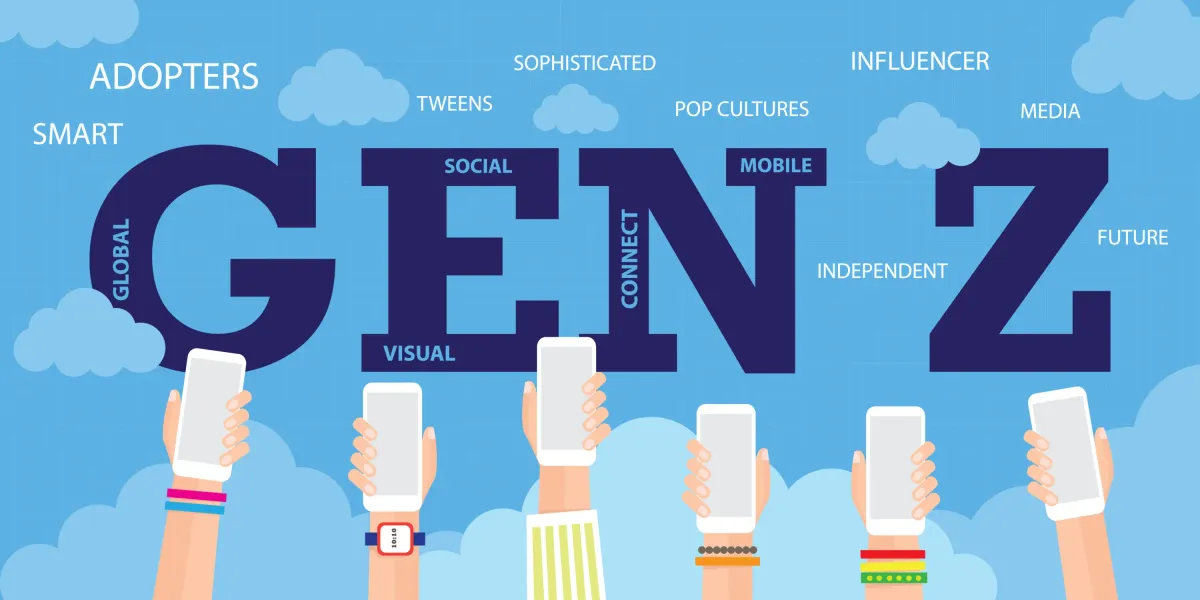The rise of the ‘main character energy’: a new playbook for Gen Z marketers
Gen Z is rejecting hustle culture and rewriting what “cool” means—marketers, take note.

Forget chasing corner offices—Gen Z is busy crafting aesthetic playlists, journaling their "soft life," and starring in their own TikTok day-in-the-life vlogs.
Welcome to the era of “main character energy” (MCE), a term coined in 2020 by Ashley Ward that encourages people to embrace their lives as if they were the protagonists of a cinematic story.
With over 5.6 billion TikTok views on the hashtag #maincharacter, this trend is more than just social media flair—it’s a cultural north star for a generation that values authenticity over aspiration, and balance over burnout.
For marketers, this shift in self-perception presents both a challenge and an invitation: How do you speak to a generation that insists on narrating its own story?
This article explores the MCE phenomenon through the lens of content marketing, brand strategy, and cultural insight. If you're targeting Gen Z, consider this your guide to engaging a cohort that’s done being anyone’s sidekick.
Short on time?
Here’s a table of contents for quick access:
- What does “main character energy” really mean?
- Why Gen Z prioritizes themselves first
- Social media: the stage for personal narratives
- Cultural implications: a generation redefining success
- What it means for brands and marketers
- Final thoughts: embracing the protagonist mindset

What does “main character energy” really mean?
At its core, MCE is about romanticizing the mundane—transforming everyday moments into cinematic scenes. Think aesthetic photo dumps, curated Spotify playlists, and TikToks that feel like movie trailers for a life of intentionality.
Ward’s original TikTok quote still resonates:
"You have to start thinking of yourself as the main character. Cause if you don’t, life will continue to pass you by, and all the little things that make it so beautiful, will continue to go unnoticed."
@ashlaward Take a second and listen #fyp #foryou #aesthetic #lovelife #drone background song: @hannah_harpist
♬ A Moment Apart - ODESZA - Ashley Ward
This self-as-protagonist mindset is especially powerful on platforms like TikTok and Instagram, where Gen Z uses visual storytelling to shape identity. The content formats may vary—POV vlogs, self-care rituals, or moodboard reels—but the underlying message is constant: My story matters.
Key markers of MCE include:
- Aesthetic control: Intentionally styled routines and personal branding.
- Emotional transparency: Sharing mental health struggles and small wins.
- Personal curation: Day-in-the-life content, playlists, and journaling.
Why Gen Z prioritizes themselves first
Main character energy is rooted in a deep cultural shift: Gen Z is saying no to hustle culture and yes to mental clarity.
Unlike older generations, only 45% of Gen Z believe career and money define success—a sentiment amplified by the pandemic’s forced introspection.
Trends like “bed rotting” (spending the day in bed for self-repair) and “soft life” (prioritizing peace over pressure) exemplify this rejection of toxic productivity. Wellness, not workaholism, is the new flex.
The stats back this up:
- 91% of Gen Z report physical or emotional stress symptoms.
- Digital spaces have become therapy-lite venues for venting and visibility.
- Self-prioritization is a radical act in a society that historically rewarded self-sacrifice.
Social media: the stage for personal narratives
TikTok and Instagram are the unofficial theaters of Gen Z’s main character arcs. Whether it’s a “hot girl walk” montage or a carefully captioned photo dump, these platforms enable micro-narratives that center individuality.
@pubity Main character energy😤😤 #Pubity (IG: jikal.ha)
♬ Confidence (sped up version) - Ocean Alley
Algorithms reward it too. Vulnerability and uniqueness often outperform polished perfection, with engagement spikes tied to content that feels raw, real, and relatable.
Visual storytelling tropes include:
- Soft aesthetics: Pastels, lo-fi soundtracks, analog filters.
- Moodboard communication: Collaged inspiration replacing direct statements.
- Day-in-the-life edits: Slice-of-life storytelling as self-affirmation.
@mia_yilin day in the life of a stanford student during finals ‼️ #studytok#study#studywithme #studytips #college #university #stanford #collegestudent #vlog #collegevlog #viral #study #finals #finalsseason #studymotivation #stanforduniversity #diml #collegelife #dailyvlog #routine #dayinthelife #asmrsounds #cleangirlaesthetic #grwm #skincare #morningroutine #productive #running #workout #healthylifestyle #exam #examseason #studying #womenintech #skincare #morningroutine #nightroutine #womeninstem #computerscience #math #fyp #dayinthelife
♬ som original - diesper00
Cultural implications: a generation redefining success
MCE signals a broader redefinition of what it means to “make it.” Gen Z isn't chasing job titles or luxury logos—they’re pursuing experiences, community, and self-alignment.
They’re also moving away from traditional success markers like job titles and material wealth. Instead, this generation prioritizes purpose, impact, and love, redefining success from the inside out. The emphasis has shifted from external validation to internal fulfillment.
In Asia, young people turning to AI chatbots for emotional support shows how this trend transcends borders. It’s not just a vibe shift—it’s a recalibration of purpose.
New Gen Z success metrics:
- Feeling aligned > looking successful
- Being authentic > being admired
- Prioritizing peace > performing productivity
Marketers who miss this nuance risk appearing tone-deaf. The old rules no longer apply.
What it means for brands and marketers
Traditional aspirational marketing won’t cut it here. Gen Z doesn’t want your luxury—they want your realness.
Brands like Duolingo, Notion, and Glossier have earned loyalty by aligning with MCE principles:
- Oddli, for instance, has built a fanbase by celebrating individuality and conscious creativity—leaning into anti-trend branding that feels fresh and intentional.
- Duolingo’s TikTok taps into absurdist humor and relatability, mirroring the unfiltered self-expression Gen Z craves.
@tokopedia I’m writing my eulogy now🥀🥀👀 @Duolingo #duolingo #ripduolingo #duolingobird #duolingoowl #toped
♬ Dixon Dallas Good Lookin - Jake Hill
Key takeaways for marketers:
- Center user stories: Turn customers into the heroes of their own content.
- Go all-in on UGC: Let Gen Z co-create. Authenticity isn’t a campaign—it’s collaboration.
- Lean into lifestyle fit: Your product isn’t the story. It’s the set piece.
- Elevate your brand’s emotional fluency: Reflect the moods, not just the trends.
Embrace the protagonist mindset
Main character energy isn’t a fleeting aesthetic—it’s the pulse of Gen Z’s worldview. They’re not just documenting life. They’re directing it.
For brands, that means stepping out of the spotlight and becoming scene partners instead. Let Gen Z lead the narrative. Provide the tools, the tone, and the platform—but don’t hijack the story.
As one Gen Z-er might put it: Don’t be the plot twist. Be the glow-up.




